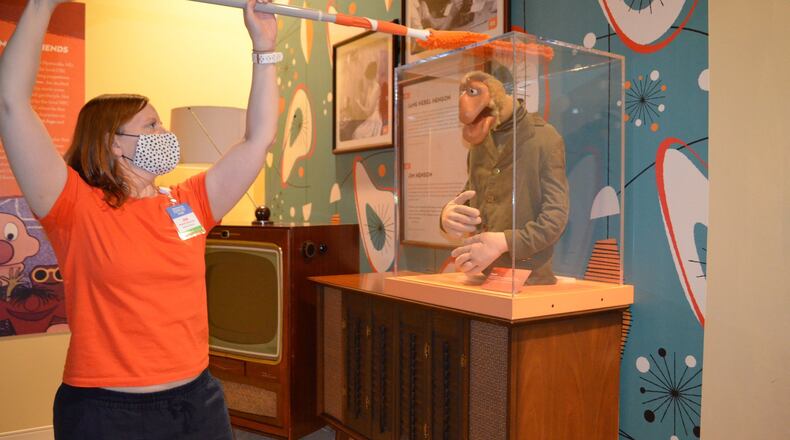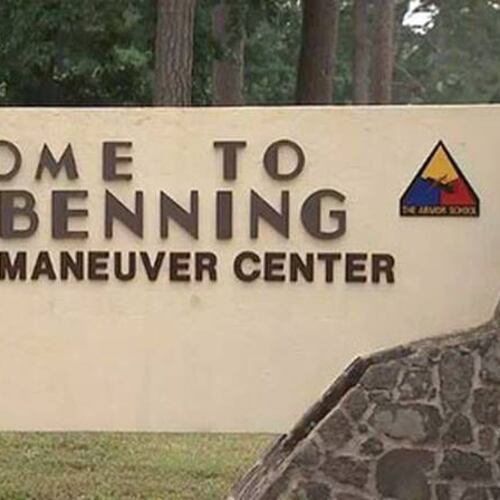Nena Gilreath and her husband Waverly Lucas, co-founders of Ballethnic Dance Company, were within days of the 30th anniversary performance of their popular show “The Leopard’s Tale” when it became clear they weren’t going to make it.
The costumes and sets were ready for a March 19 premiere. Rehearsals had gone well. But the specter of COVID-19 was gaining ground and a shutdown of not just metro Atlanta, but the state, seemed imminent. Just a week before the scheduled opening, Gilreath and Lucas realized they would have to cancel the show. They began refunding tickets.
“Eighty five people were affected both on stage and behind it,” Gilreath said.
As the pandemic worsened, Gilreath applied for and received federal Payroll Protection Program funds to pay its four-person full-time staff. They also received a grant from the Chestnut Family Foundation, in an amount Gilreath declined to disclose. But as is the case with many small arts organizations, Gilreath and Lucas operate on a razor-thin margin with an annual operating budget of about $400,000.
They don’t have a development director to help apply for what could be lifesaving grants. Yet, the East Point dance company has one advantage many arts groups don’t; they own their building in East Point.
“So, we’re not going to get evicted,” Gilreath said. “So it gives us a moment to think about how we’re going to come out of this crisis in a better way.”
The cancellation was a financial blow, but not a death knell, Gilreath said. This isn’t even the worst the company has seen. That was a few years ago when her husband developed a persistent infection after surgery on his Achilles tendon. They lost their health insurance and almost lost their home.
“It was a terrible time. So, when COVID went down, I said, ‘Bring it! And wear a mask!’” Gilreath said. “I know we’ll come out of it. I’m not afraid.”
Not every arts group has Gilreath’s optimism. Theaters, dance companies and other organizations that depend on ticket sales to fund operating expenses saw their income go down to zero during the shutdown. They were facing the same disaster that has roiled the city’s restaurant industry, but without the possibility of offering take-out food.
What will the pandemic do to Atlanta’s arts community?
The Community Foundation of Greater Atlanta recently conducted a survey of nonprofit arts organizations, asking about reserve funds, with the underlying question, how long would you be able to survive with no income? For many of them it was under three months. Few were prepared to survive a whole season.
Grants from national and local groups including the Community Foundation stepped in to fill the need, but “the need far outpaces what’s available, anywhere, from government or from philanthropy or from us,” said Lita Pardi, the foundation’s vice president of community impact.
Pardi and others talk of an “extinction event,” the possibility that many groups might not survive. “Everything has been disrupted by this asteroid.”
Starting at a disadvantage
One problem for Georgia’s arts communities is that they started out at the back of the pack. Georgia is behind every state but Wisconsin in its public support of the arts, spending 14 cents per capita, according to the National Assembly of State Arts Agencies.
Hoping to change that number, Georgians for the Arts staged a demonstration back in January, bringing in dancers, musicians and visual artists to the State House to demonstrate Georgia’s cultural resources.
Then COVID struck, and the state was faced with reducing its budget by 14%, no exceptions.
This has happened before. During the recession of 2008-2010 arts funding took a hit. Once at $4 million it dropped to a little more than $1 million, “and half of that is from the National Endowment for the Arts,” said Jessyca Holland of C4, an Atlanta-based nonprofit that trains arts groups in professional development and financial literacy. “We’re in a state that never went back to pre-recession funding.”
Josh Phillipson of the Atlanta Regional Council reflected on how many significant organizations disappeared during that time, including the 30-year-old Georgia Shakespeare (originally the Georgia Shakespeare Festival) and Theatre of the Stars, born in 1960 when modern Atlanta was an infant.
Any such loss will be painful for the cultural life of the city. But it will also be measured in cold hard cash. The nonprofit arts sector injected $719 million into the state’s economy in 2017, said Phillipson.
Some of Atlanta’s artists will adapt more easily than others. Lauri Stallings and her richly celebrated dance company Glo have made an art of performing in unorthodox locales, including busy Midtown streets and along the banks of the Chattahoochee. “The sky has been our rooftop most often in the canon of the work,” said Stallings.
Outdoor performances by groups such as Glo may become more common in the new era of social distancing.
With a combination of grants and CARES funding Stallings has been able to continue paying her dancers, though she said all her projects have either been canceled or put on permanent hold. Also on hold is a return to conventional performance, she said. “There is a possibility that conventionalism, that we can gather in a venue, may be on pause indefinitely.”
For arts organizations around the country, survival strategies vary. During the height of the pandemic, some offered free programming online, such as the High Museum’s virtual collection portal where viewers could browse images of the museum’s vast holdings. Other organizations, such as Hammonds House Museum, charged for virtual programming including show openings and artist talks.
Hammonds House, for example, streamed the May virtual opening of “Nu Africans,” a show by multimedia artists Grace Kisa and Maurice Evans. Members watched for free, all others paid $7. That’s the typical admission price for in-person visitors.
Of the 207 viewers, 90 were charged, said Leatrice Ellzy Wright, executive director of Hammonds House. Ellzy Wright said plans are in the works to expand digital programming, including podcasts and virtual tours, given that some people are still leery of public gatherings in enclosed spaces. Non-members will have to pay a fee. The museum is betting on the fact that because of its unique mission, to feature the work of visual artists of African descent, people will pay for content.
“You have to monetize it before you roll it out because you can’t go back and do it later,” Ellzy Wright said.
For years, the organization got the bulk of its operational budget from what was then called the Fulton County Arts Council. Now, as the county has had to streamline budgets, Hammonds House gets less than a third of its roughly $300,000 annual operational budget from Fulton County Arts and Culture. The rest comes from grants, donors and fundraising, Ellzy Wright said.
None of Hammonds House’s four employees has been furloughed so far, but they are all classified as part time, Ellzy Wright said. She is the only full-time employee. The museum received PPP money, which covered two months of salaries. Still, the organization is tapping its reserve fund to stay afloat, she said, and as of the end of June only had enough money to cover salaries through early July.
“If we had to pay a fulltime staff, we would have had to wrap it up and furlough everybody,” Ellzy Wright said.
Digital challenges
For theater and music groups, capturing the excitement of in-person performance on a Zoom livestream is a challenge, but some have been successful.
“I’ve always thought of the orchestra as a battleship that’s hard to turn,” said Jennifer Barlament, executive director of the Atlanta Symphony Orchestra. “But actually in this situation we have some real nimbleness about us.”
The ASO has been streaming archival concerts, and staging virtual ensembles, such as a popular performance by the ASO Brass Quintet of “Georgia on My Mind.” Still, the orchestra gets half its multi-million-dollar budget from “earned revenue,” mostly ticket sales, and those sales are currently non-existent, requiring a cut in pay for musicians and some furloughs for administrators.
The plucky Dad’s Garage Theatre found a way to monetize its livestream through the online service Twitch. The income is a fraction of their usual haul from ticket sales, but going online has also allowed them to expand the number of students taking improv classes.
Dad’s Garage is one the few groups with a substantial operating reserve ($100,000) and a maintenance reserve fund ($70,000). Those emergency funds, plus Economic Injury Disaster Loans and Payment Protection Program loans and mortgage forbearance from the bank will help the theater group stay afloat even if it doesn’t restart most programs until 2021.
“We’re paying all of our bills and our staff,” said Smith.
As Georgia begins to open back up, arts venues must look carefully at safety. The MINT Gallery at the MET development, south of downtown, began allowing socially distanced visitors back into their 7,300 square-foot facility June 11. Their annual juried exhibit is supposed to open July 11, but interim executive director Jessica Helfrecht hasn’t decided whether to have a reception or not. “If we do, it will be with timed tickets.”
Some groups are taking halfway steps. At the Center for Puppetry Arts, visitors will be able to walk through the museum starting July 10 and there are original one-man shows online (such as David Stephens’ “Jack and the Beanstalk”), but the theater won’t be open to audiences this summer, and perhaps not until the end of the year.
Officials with the National Endowment for the Arts say galleries, museums and outdoor venues may have a slightly less treacherous path forward because they can manage crowd sizes by timed entry and allow more easily for social distancing. Theaters and live concert halls, however, will likely have the most difficult time figuring out how to serve audiences and keep them safe through social distancing, and still make money.
Working together
Kenny Leon’s True Colors Theatre Company is part of a consortium of arts groups across the city including Atlanta Ballet, the Atlanta Symphony Orchestra, Alliance Theatre and Actors’ Express, that are meeting virtually on Fridays to talk about best practices on reopening, said Chandra Stephens-Albright, managing director of True Colors.
They have formed teams to develop protocols from the box office to backstage including cleaning, social distancing and safety on-stage for actors. One thing the group is unanimous on is that there is a bottom-line attendance threshold necessary for reopening.
“No one ever budgets for 100% capacity,” said Stephens-Albright. “Fifty percent capacity, that’s not that big a deal, but 30% capacity could really change the economics.”
Then there is the question of the willingness of audiences to gather in groups once more. In May an Arthur M. Blank Family Foundation survey of audiences with 4,106 respondents found that only 20 percent would be “comfortable” attending a performance at a venue holding 1,000 or more, even with safety measures in play.
“I feel like we’re all going to be opening up to nobody, or opening up and causing a second wave of disease,” said Holland of C4.
But the desire to get together, to hear music, experience theater and see each other, will not disappear. “We are social creatures,” said Pardi. “Even introverts are going to crave being around people after so much time in isolated circumstances.”
Keep Reading
The Latest
Featured












